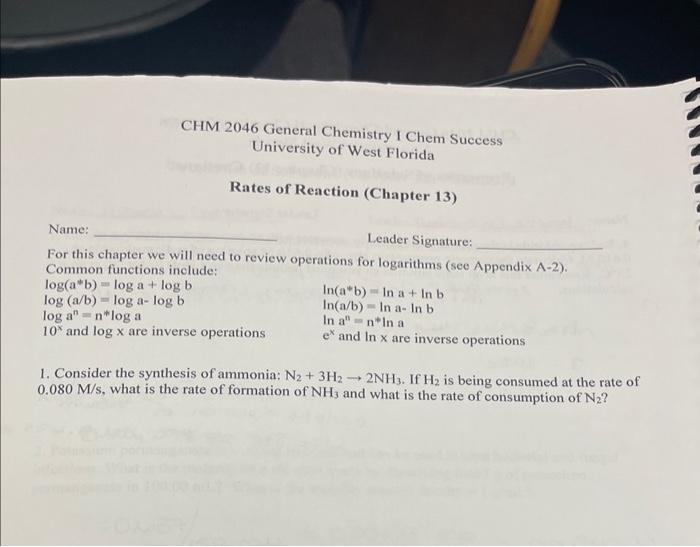Answered step by step
Verified Expert Solution
Question
1 Approved Answer
For this chapter we will need to review operations for logarithms (see Appendix A-2). Common functions include: log(ab)=loga+logblog(a/b)=logalogblogan=nloga10xandlogxareinverseoperationsln(ab)=lna+lnbln(a/b)=lnalnblnan=nlnaexandlnxareinverseoperations 1. Consider the synthesis of ammonia: N2+3H22NH3.

Step by Step Solution
There are 3 Steps involved in it
Step: 1

Get Instant Access to Expert-Tailored Solutions
See step-by-step solutions with expert insights and AI powered tools for academic success
Step: 2

Step: 3

Ace Your Homework with AI
Get the answers you need in no time with our AI-driven, step-by-step assistance
Get Started


